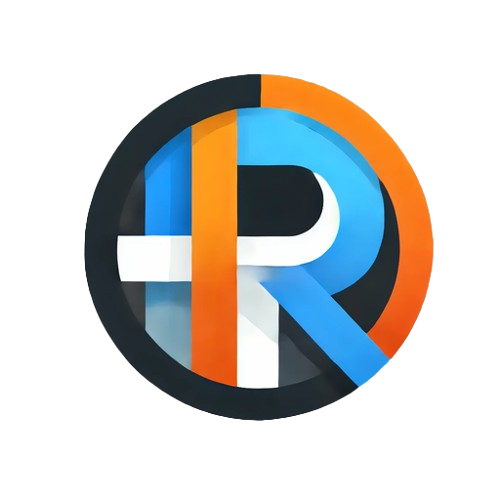
The Revelation Workbook for Higher Education
This article introduces the Revelation Workbook for Higher Education, a structured Excel workbook designed to streamline data collection for the digital estate of higher education institutions. Pre-populated with realistic dummy data, the workbook provides a practical starting point for documenting and analyzing an institution’s technology landscape.
The article starts by providing a detailed breakdown of the workbook's structure, including the key worksheets and their roles in organizing and refining architectural data. Understanding these components ensures that users can effectively configure their digital estate before visualizing it in Revelation.
The article goes on to guide users through opening the workbook in the Revelation Enterprise Architecture tool and applying color mapping to enhance visual representation. By leveraging these features, users can intuitively analyze system attributes, identify key interactions and relationships and gain actionable insights into their digital estate. The goal is to enable higher education professionals to effectively utilize the Revelation EA tool for rapid documentation, structured analysis, and the strategic optimization of their digital transformation efforts.
The Revelation Workbook
The Revelation Workbook is a standard Excel workbook structured into four key worksheets:
1. Model Worksheet (Optional)
The Model worksheet allows users to define metadata for the model. It also enables essential diagram properties, including MODELTYPE, LAYOUT, and VIEW, to be pre-configured in the workbook. The worksheet is optional but improves the Revelation user's experience when used.
The worksheet has four fields: key, value, inputType, and refData. The refData field, which only applies when the inputType is select, refers to select options internally held by Revelation. These can be explored in the Model tab within the application.
- For the Revelation Workbook for Higher Education, the MODELTYPE is C4, the LAYOUT is CenteredRectangle, and the VIEW is Architecture.
- Any number of attributes can be added. Notably, if the inputType is set to URL, the value appears as a clickable hyperlink, enabling quick access to additional documentation.
2. Systems Worksheet
This worksheet defines the systems in the model, with three mandatory properties:
- ID – A unique identifier for each system, referenced in the Interactions worksheet.
- TEXT – The label displayed for the system in diagrams.
- TYPE – The symbol representing the system, such as SYSTEM, ACTOR, or DATASTORE (for a C4 model).
Additional user-defined properties can be included as needed. Revelation dynamically adjusts to these properties, which can also be used in color mapping. Definitions for the user-defined properties in the systems worksheet can be found in the Documenting Your Digital Estate article.
3. Interactions Worksheet
This worksheet outlines the Interactions and relationships between systems. Four mandatory properties structure the interactions:
- ID – A unique identifier for each interaction.
- FROMID – The system originating the interaction.
- TOID – The system receiving the interaction.
- TYPE – Defines the interaction line style (-> for a C4 model).
While the TEXT property is optional, it can be used to label interactions. Like the systems worksheet, all additional properties are user-defined. Definitions for the user-defined properties can be found in the Documenting Your Digital Estate article.
4. Reference Data Worksheet (Optional)
This sheet ensures data consistency by listing predefined values for workbook properties. Using Excel’s Data Validation feature, these values appear as dropdowns, reducing input errors.
Additionally, data validation is applied to the FROMID and TOID fields in the interactions worksheet, ensuring that only valid system IDs are referenced.
Viewing the Workbook in Revelation
To explore the workbook in Revelation:
- Download the sample workbook. Revelation Workbook for Higher Education
- Open Revelation: Launch Revelation.
- Select File | Open.
- Set Filetype to Excel (.xlsx).
- Use Choose File to select the downloaded workbook.
- Click Open.
The Model, Systems, and Interactions tabs in the left panel allow users to navigate and interact with the data.
- Data can be filtered and sorted for better visibility.
- Standard icons enable users to add, edit and delete systems and interactions, or copy data to the clipboard.
- A text wrapping option enhances readability of longer descriptions.
- The panel divider is adjustable for an optimized data-diagram view.
Setting the Color Map
Revelation enables color mapping of systems and interactions as a means of providing an intuitive display of property values. To configure color mapping:
- Select Settings | Color Map.
- For System Property, select TIME (TOLERATE, INVEST, MIGRATE, ELIMINATE).
- Select a System Palette. The Distinguishable10 palette provides a clear range of colors.
- Check the Enable System Color Map checkbox.
- Repeat the process for the Interaction Color Map, selecting Protocol as the property.
- Click Save.
The diagram is displayed with the applied color mapping, offering an intuitive visual representation of key attributes. For convenience, the selected color mapping persists across sessions.
Potential Enhancements to the Workbook
The Revelation Workbook for Higher Education is provided for illustration purposes, but users can modify it by adding or removing properties as needed. For example, a Platform property could be added to the Systems Worksheet to capture the underlying technology stack. Similarly, the Interactions Worksheet could be extended to support different protocols at each end of an interaction where middleware mediates between systems.
These enhancements allow institutions to tailor the workbook to their unique enterprise architecture needs, ensuring that the tool remains adaptable and relevant in evolving digital landscapes.
Conclusion
The Revelation Workbook for Higher Education is a powerful tool for institutions looking to document and analyze their digital estate efficiently. By structuring data through its worksheets and leveraging the visualization capabilities of the Revelation EA tool, users can gain valuable insights into their systems and interactions.
Whether mapping out current technology landscapes or planning future digital transformations, this workbook provides a structured, scalable approach to enterprise architecture. We encourage users to explore its features and integrate it into their workflows for more informed decision-making.
Contact
For more information, contact info@microplatforms.com